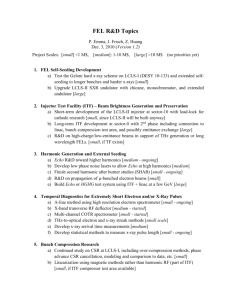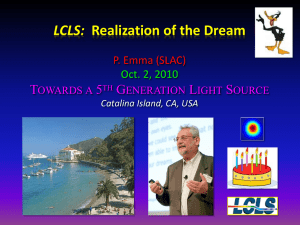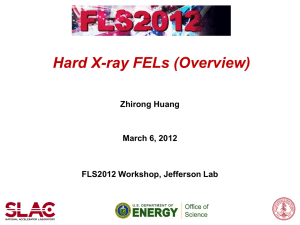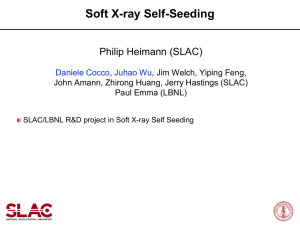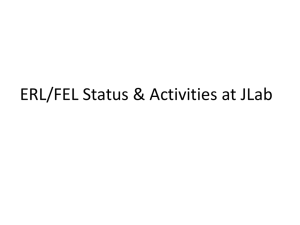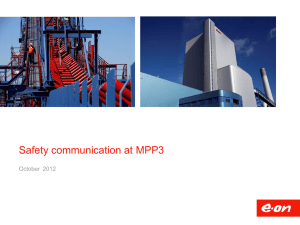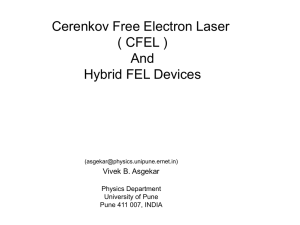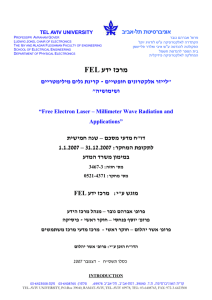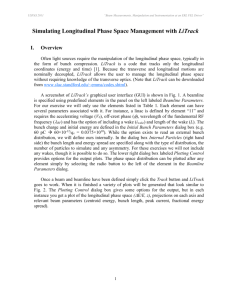Self-seeding for hard X
advertisement
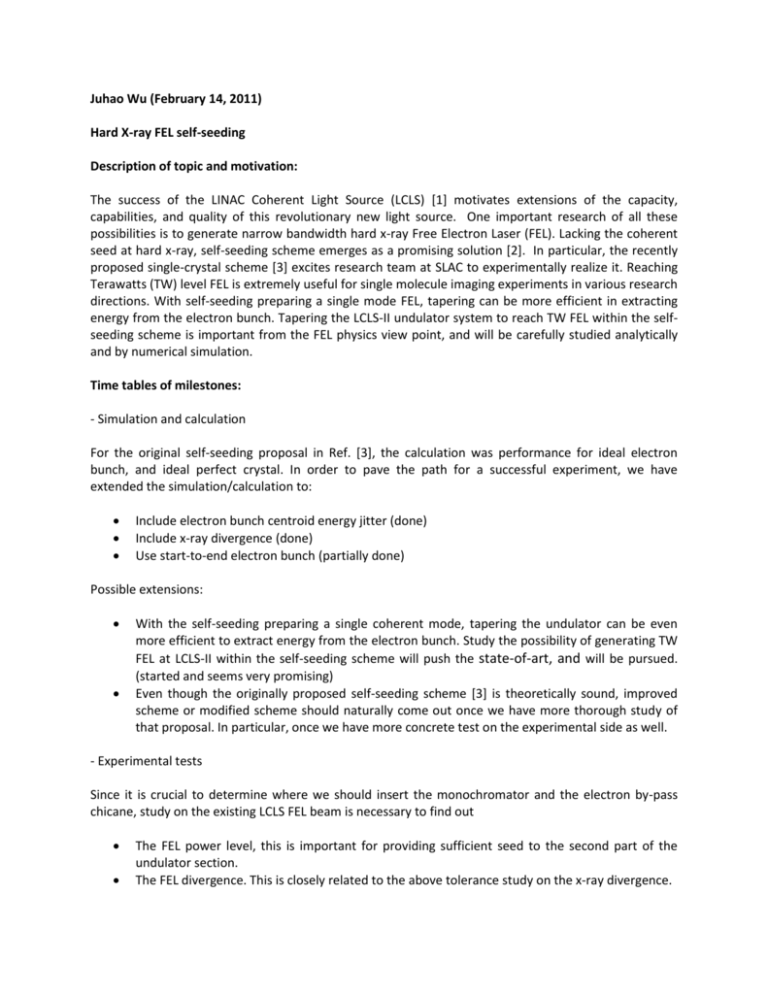
Juhao Wu (February 14, 2011) Hard X-ray FEL self-seeding Description of topic and motivation: The success of the LINAC Coherent Light Source (LCLS) [1] motivates extensions of the capacity, capabilities, and quality of this revolutionary new light source. One important research of all these possibilities is to generate narrow bandwidth hard x-ray Free Electron Laser (FEL). Lacking the coherent seed at hard x-ray, self-seeding scheme emerges as a promising solution [2]. In particular, the recently proposed single-crystal scheme [3] excites research team at SLAC to experimentally realize it. Reaching Terawatts (TW) level FEL is extremely useful for single molecule imaging experiments in various research directions. With self-seeding preparing a single mode FEL, tapering can be more efficient in extracting energy from the electron bunch. Tapering the LCLS-II undulator system to reach TW FEL within the selfseeding scheme is important from the FEL physics view point, and will be carefully studied analytically and by numerical simulation. Time tables of milestones: - Simulation and calculation For the original self-seeding proposal in Ref. [3], the calculation was performance for ideal electron bunch, and ideal perfect crystal. In order to pave the path for a successful experiment, we have extended the simulation/calculation to: Include electron bunch centroid energy jitter (done) Include x-ray divergence (done) Use start-to-end electron bunch (partially done) Possible extensions: With the self-seeding preparing a single coherent mode, tapering the undulator can be even more efficient to extract energy from the electron bunch. Study the possibility of generating TW FEL at LCLS-II within the self-seeding scheme will push the state-of-art, and will be pursued. (started and seems very promising) Even though the originally proposed self-seeding scheme [3] is theoretically sound, improved scheme or modified scheme should naturally come out once we have more thorough study of that proposal. In particular, once we have more concrete test on the experimental side as well. - Experimental tests Since it is crucial to determine where we should insert the monochromator and the electron by-pass chicane, study on the existing LCLS FEL beam is necessary to find out The FEL power level, this is important for providing sufficient seed to the second part of the undulator section. The FEL divergence. This is closely related to the above tolerance study on the x-ray divergence. The FEL pointing stability. This will be important for the overlapping of the seed with the electron bunch when they meet again at the entrance of the second part of the undulator Even though the LCLS undulator system cannot provide large tapering to reach extremely high power level FEL, some experimental studies can be performed as follows. The transition behavior of how the seeded FEL follows the tapering will be studied against theoretical and simulation finding. Stability of a tapered FEL Transverse coherence of tapered FEL - Writing Paper Depending whether important discovers can be obtained, different level of paper will be composed. Conference papers should be targeted for detailed simulation results of the LCLS or LCLS-II beam parameters, based on the original scheme [3]. If improved scheme or modified scheme differs significantly from the original one, journal paper should be considered. The tapering study for a selfseeded FEL would be sufficient to be a stand-alone paper. - Commissioning of the single-crystal Hard X-ray Self-seeding (HXRSS) scheme at LCLS Paul Emma is leading the effects to commission hard x-ray self-seeding scheme at LCLS. Participating in the commission and analyzing the data are planned. Detailed simulation will be provided for the FEL properties at various steps along the commission plan. Deliverables: 1) Paper: Simulation details on the self-seeding FEL and tapering will be reported in a few conference proceeding papers for FEL 2011. If more improvement can be obtained, journal papers can be considered. 2) Commissioning: According to Paul Emma, the commissioning of the HXRSS should be completed at the end of 2011. References: 1. P. Emma et al., Nature Photonics 4, 641 (2010). 2. J. Feldhaus et al., Optics Communications 140, 341 (1997). 3. G. Geloni et al., DESY preprint, DESY 10-133, August 2010; arXiv:1008.3036v1.
